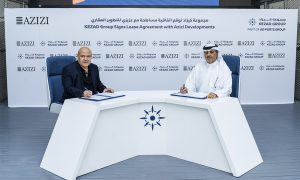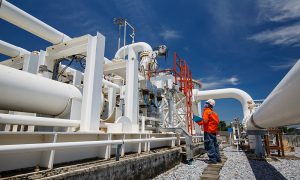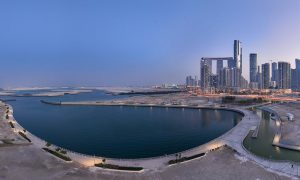Abu Dhabi’s non-oil sector surges ahead
Abu Dhabi to press ahead with non-oil activities as sector grew by 9% last year

Falling oil prices and the emergence of feedstock alternatives in the US spell mixed fortunes for the Gulf Cooperation Council (GCC) petrochemicals sector.
By Anoop K Menon
While GCC petrochemicals revenues reached an all-time high of $89.4bn in 2013, the industry may be hard pressed to put up a repeat performance in 2014 and beyond. Oil prices in 2014 have reached their lowest levels in more than four years, which has caused concern about current and future petrochemical prices.
The advantage of favourably priced feedstock enjoyed by GCC producers over the last 30 years is increasingly being challenged by the emergence of feed stock alternatives in other parts of the world, a fact acknowledged by the keynote speakers at the ninth GPCA Annual Forum in Dubai last month. For example, shale gas has already changed the long-term outlook for the US and the global gas markets, and the downward pressure it exerts on local gas prices has revived the US petrochemicals industry.
“Downstream project economics are expected to be re-examined and reassessed as prices continue to fall and as future forecasts expect a new chapter in the history of oil prices,” said HE Dr Mohammed Saleh Abdulla Al Sada, Minister of Energy & Industry, Qatar, while delivering the plenary address at the GPCA Annual Forum.
Lower naphtha prices linked to lower crude oil prices are of little benefit to the GCC petrochemicals industry, where ethane is the dominant feedstock.
“Our industry has benefitted from a feed stock which has a fixed price [set by the government], so we are not utilising much of liquid naphtha-based feedstock in our portfolio,” explains Mohamed Al-Mady, chairman, Gulf Petrochemicals & Chemicals Association (GPCA) and vice-chairman and CEO, SABIC.
Where contracts for finished products like olefins and polymers are linked to oil prices, lower oil prices actually squeeze the profit margins of producers.
According to a recent report by Standard & Poor’s, while GCC producers like SABIC and Industries Qatar retain a large competitive advantage over naphtha-based crackers in Europe and Asia, the US shale gas boom and the American petrochemical industry’s resulting lower position on the cost curve has significantly changed the competitive landscape in ethane production. Incremental North American supply may hurt product pricing in key export markets over the next few years or longer. Moreover, oil and gas producers and refiners, and chemical companies operating in the US, have indicated they’re planning to build several new ethane crackers in the country, while additional gas allocation in Saudi Arabia and Qatar remains limited.
Though some believe low international oil prices will put US shale oil producers out of business, the fact remains that thanks to their sunk costs, the incremental margins could continue even if international oil prices were to decline to the $30-40/barrel range, far below the $70-75/barrel threshold.
Another big challenge for the GCC petrochemicals industry is the coal-to-chemicals technology being developed by China, their biggest export market. Having mastered the technology for converting coal to syngas to olefins, China is reportedly building 20 polyolefin plants that will use these olefins.
“China’s coal-based polyethylene could boost its plastics industry and become a relatively low-cost alternative to products from our region or those produced using American shale gas,” said Al-Sada.
Moreover, the slowdown in China, where economic growth is expected to slip to 7.2% this year, will put pressure on the GCC’s petrochemical exports to that country.
But there are other risks as well. Lower government revenues resulting from low oil prices may force the region’s governments to tackle energy subsidy reform, which in turn could hurt industries reliant on feedstock subsidies, like petrochemicals. The International Monetary Fund (IMF) last year estimated that the subsidy cost for GCC countries ranged from 10% to 35% of revenues. The S&P report argued that while energy subsidy reform may be less pressing for oil-exporting countries than for importers, there is a need for coordinated reform. “The recent fall in oil prices and resultant pressure on government budgets is likely to bring this issue to the fore, likely resulting in higher feedstock costs for commodities producers in the region over the coming years.”
Preparing for change
As the advantage of favourably-priced feedstock gets eroded, the petrochemicals industry will have to fine-tune its strategy and existing business models to retain its competitive edge.
“In the current economic environment, we expect success to come to those companies that generate innovative products, services, processes and business models to gain competitive advantage,” says SABIC’s Mohamed Al-Mady. “My best advice is participate where you find the feedstock and be an active player, rather than merely manufacturing at home and exporting.”

Mohamed Al-Mady, chairman, Gulf Petrochemicals & Chemicals Association (GPCA) and vice-chairman and CEO, SABIC
SABIC has announced several initiatives to take advantage of changing feedstock dynamics, which includes modifying its existing cracker in the UK to handle shale gas imported from the US and working on the world’s first oil-to-chemicals facility, expected to be set up in the Kingdom.
“Our oil-to-chemicals project is in the research stage,” says Al- Mady. “We expect it be influenced by recent developments in shale gas and coal chemistry, so we have to make sure that whatever is going to be built is sustainable and can compete with all of these.”
He points out that two major trends for the industry and its stakeholders to factor in going forward are shorter time frames when it comes to leveraging established competitive advantages or reacting to unforeseen events; and the power of big data.
“Big data is indeed with us with its blessings and challenges. Those who are able to harness its power or attract those able to do so will be well positioned to shape the future.”
In his speech, Al-Sada underlined the need to develop the region’s innovative capability to revitalise the petrochemical industry’s overall competitiveness. “In 2012, the GCC petrochemicals industry invested $318m on R&D initiatives, which constitutes a 30% increase over 2011. This growth percentage is higher than the 10% global average R&D expenditure, but is it all going in the right direction? Our region’s spending is less than 1% of the global industry total, while our patents are 0.4%. Altogether, 75% of the industry R&D spending in the region is geared towards maintaining and advancing existing technologies, while the remaining 25% is invested in new chemistry. I believe that time has come for this to change.”
In his co-keynote address, Khalid Al Falih, president and CEO of Saudi Aramco, made a strong case for feedstock diversification to overcome the region’s gas constraints and make the petrochemicals industry more resilient and adaptable.
The Aramco chief pointed out that the industry should look at tapping the region’s plentiful supply of alternative liquid feed stock, instead of relying on ethane alone.
“I believe that we shouldn’t think of these feedstocks as mutually exclusive choices, but rather view them as a mixed pool of feedstock that can be used to leverage each other,” he said. “Liquids are more versatile than pure ethane and, when used in mixed feed crackers, offer a broader product slate, including opportunities to produce specialty chemicals, which in turn can help spawn new industries and consequently many new jobs.”
Saudi Arabia’s business strategy of integrating refineries and petrochemicals is best exemplified by Sadara, its joint venture with Dow, which will take advantage of the company’s access to low-cost, gas-based feedstocks and liquid feedstocks. It will be the first chemical complex in the GCC to crack naphtha when it is commissioned next year.
Al Falih also noted that instead of restricting the mixed feedstock cracker strategy to green-field projects and thus limiting its impact, the industry would do well to enhance existing chemical assets that were built in the 1970s and ’80s.
“It would generate enormous additional value if we pursued opportunities to restructure and upgrade these legacy assets, some of which are fully depreciated and offer limited added value to local economic development and profitability of companies in the future,” he said. “This retrofit would include changes to the feedstock mix, deployment of more energy-efficient technologies and the addition of high-value specialty products. But to succeed in specialties, we will need to leapfrog in knowledge intensity and accelerate our innovation engines.”
It is obvious that availability of feedstock, inherent economies of scale and large investments have helped create a compelling success story in the GCC petrochemicals industry, which is today the second largest manufacturing sector in the region, producing $100bn worth of products annually. GPCA estimates that petrochemical producers in the Arabian Gulf will increase their capacity by almost 50%, producing more than 190m tonnes by the year 2020.
But for the region to continue to be a dominant force in the production of petrochemicals, it needs to capitalise on existing opportunities by leveraging technical expertise and expanding its global footprint. Additionally, the industry needs to proactively tackle emerging issues – global trends affecting the use of petrochemical products, the pursuit of energy efficiency, the development of new sources of feedstock and the delivery of upcoming projects – in a timely and cost-effective manner.







